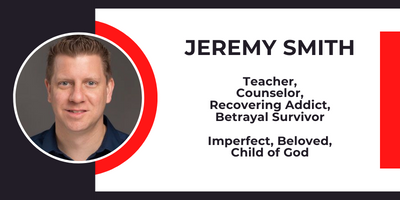What Is Third Order Change?
Jul 16, 2024
Change is not easy, especially when dealing with internal issues. Most people try the "stop it" method parodied by Bob Newhart, but even if the behavior ends, it does not mean a person is healthy.
True health requires getting to the roots far below the surface, changing not just behavior, but thinking and eventually identity.
Adapted from The Journal of Applied Behavioral Science, this empowering model is best described as the "Three Orders of Change." Download a PDF version here.
Now let's explore the differences with the help of a few Star Wars characters along the way.
First-Order Change
Behavior
First-order change is when behavior is altered. Focused strictly on what a person does, it means stopping or decreasing the use of any unwanted behaviors like pornography, masturbation, affairs, alcohol, smoking, overeating, impulse buying, angry outbursts, or illicit drugs.
Similarly, it can mean starting or increasing things like exercise, healthy eating, regular self-care, attending therapy, or attending support groups. All these changes are observable and measurable, which makes this order of change the most appealing for a quick fix.
Although a logical place to start, it creates a false sense of hope as the effects are superficial and typically short-lived. Most recovery programs fixate on this level of change, defining success as sobriety alone.
For example, AA says no alcohol, Weight Watchers says no weight gain, and Pornography recovery groups say no viewing illicit images. Notice that the focus is on external behaviors, making it easy to measure and judge.
Similar to the "First Order" in Star Wars, first-order change is simplistic, black and white, rigid, and void of curiosity and depth.

Second-Order Change
Thinking
Second-order change is when thinking is altered. Focused on understanding the psychological and emotional drivers of behavior, it creates change through knowledge and insight. Awareness of connections between past and present help explain the why of unwanted behaviors.
Instead of being pressured to just "stop it," there is room for curiosity, exploration and grace. Even relapse is viewed less as a failure and more as a learning opportunity for deeper self-awareness, healing, and growth.
Books, videos, articles, podcasts, support group curricula, etc. help make sense of behavior and move closer to identifying legitimate needs being met in illegitimate ways.
It is rare for support/recovery groups to reach this level of change, but those that do acknowledge behavior without making it the priority. They encourage members to ask deeper questions about the underlying thinking that eventually led to unwanted behaviors.
Similar to "The Force," second-order change embraces the invisible and powerful connections between behavior and thought.

Third-Order Change
Identity
Third-order change is when identity is altered. Focused on how one views themself, this level is the deepest and most difficult to access. It's where shame resides, making it one of the hardest emotions to heal.
Because latent narratives are subconscious and so deeply ingrained, talk therapy, psycho-education and self-help material, which are pre-frontal in nature, become ineffective. Rewriting neural networks at this depth requires tools like EMDR, IFS, and guided meditation.
While words may describe the process, one must experience third order change to fully comprehend its power. Most often, this necessitates a professional who has themselves experienced third-order change and can administer EMDR and IFS from that perspective.
Long-term effects include increased curiosity, kindness, gentleness, openness, compassion, and grace... first for oneself and, as a result, for others. IFS describes this as living from one's True Self.
Similar to Luke learning his identity, third-order change dramatically alters the way we see ourselves and others. In case that reference feels too dark, consider Lone Starr's transformation when he, like us, discovered that he was, in fact, royalty!


Summary
In simplest terms, first-order change alters what a person does, second-order change alters what a person understands, and third-order change alters how a person views themself.
Distilled to three words, it's the difference between behavior, thinking, and identity.
Feeling stuck in the healing process likely means you've plateaued at a lower order change. If you sense there must be something more, you're right... don't settle, keep going deeper! There is so much better waiting just ahead.
Experience the beauty of third-order change:
Marriage Recovery Course
Conquering Betrayal
Professional Care
FREE Recovery Self-Assessment
RELATED:
- Download PDF handout
- Four Stages of Spiritual Growth
- Religion vs Gospel: Part 1
- Religion vs Gospel: Part 2
- Is There Hope for Porn Addiction?
- What Is Betrayal Trauma?
- Articles on Marriage Recovery

Stay connected with news and updates!
Receive emails about new posts, free webinars, trainings and live events.
We hate SPAM. We will never sell your information, for any reason.

